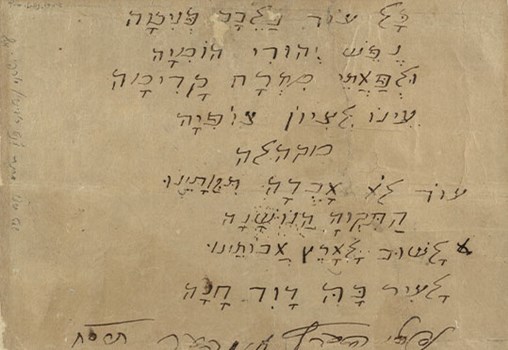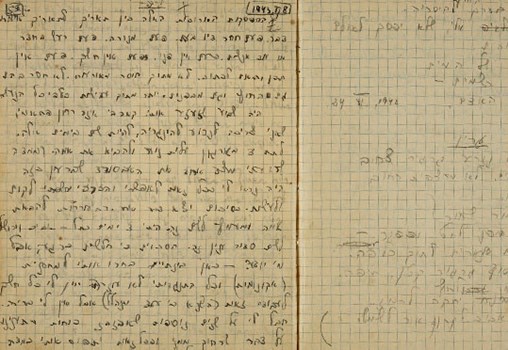Dr. Hezi Amiur
Hezi is a scholar of modern Jewish history. He has a PhD in Jewish History from the Hebrew University. His book, Mixed Farm and Smallholding in Zionist Settlement Thought, was published by the Zalman Shazar Center in 2016 and was awarded the Yad Izhak Ben-Zvi Ish Shalom Prize for 2020.
Hezi has been the curator of the Israel Collection at the National Library since 2010. He specializes in Zionist settlement, especially during the Second Aliyah and the Third Aliyah, as well as in the history of Israeli culture. His weekly radio segment on Kan Bet's "Kalman – Liberman" program, dedicated to the Hebrew song and its place in Israeli popular culture and in the history of the yishuv (pre-state Isreal) and the state, is an example of the integrative nature of his role.

 Sign in with Google
Sign in with Google
 Sign in with Facebook
Sign in with Facebook


![Keren HaYesod: Yemei Homa Umigdal ["Days of the Tower and Stockade"] (1936–1939). Designed by Otte Wallish
"Kered HaYesod Sows, the Hebrew People Reap" - With a few brief Hebrew words, this poster expresses the essence of Zionist settlement in the days of “Tower and Stockade”. The short text alludes to Shir HaMa’alot ("The Song of Ascents") which describes redemption. The map shows the layout of settlements in the northern valleys and coastal plain in the late 1930s, and includes both sides of the Jordan as the national conception of the Land of Israel before the partition plan. The tower presents the period’s prominent settlement ethos—a tower and a stockade, focusing on the Jezreel Valley.](/media/9151/700268631-l.jpg?anchor=center&mode=crop&width=508&height=350)

